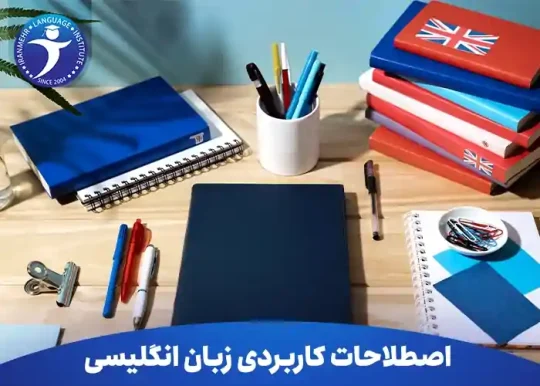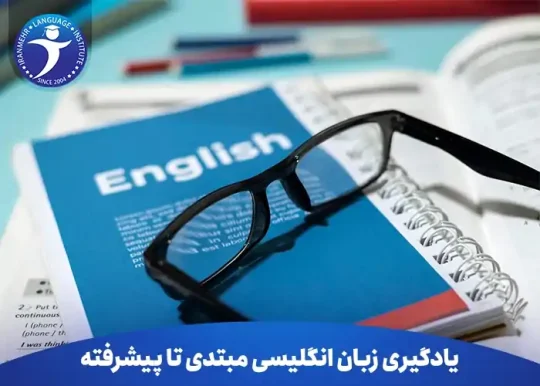عبارت وصفی از ترکیب یک صفت و هر مکمل معنایی دیگری تشکیل شده که جهت توصیف یک اسم یا ضمیر مورد استفاده قرار میگیرند. صفتی که در عبارت وصفی استفاده میشود را نیز head word آن عبارت میگویند.
در برخی نکات گرامری، صفت جمله را به عنوان یک عبارت وصفی در نظر میگیرند. اما در این مقاله، منظور ما از عبارت وصفی، عبارتی است که از دو یا چند کلمه تشکیل شده باشد.
گاهی adjective phrase را با adjectival phrase در یک زیر مجموعه قرار میدهند، اما عملکرد این دو ساختار زیاد هم شبیه بهم نیست. در ادامه، تفاوت این دو مورد را بیشتر بررسی خواهیم کرد.
دوره های آموزش زبان انگلیسی | |
| دوره حضوری | آموزش زبان انگلیسی برای کودکان |
| دوره حضوری | آموزش زبان انگلیسی برای نوجوانان |
| دوره حضوری | آموزش زبان انگلیسی برای بزرگسالان |
تفاوت Attributive و Predicative
عبارات وصفی میتوانند Predicative و Attributive باشند.
صفات Attributive درست قبل یا بعد از اسمی که توصیف میکنند، قرار میگیرند. مثال:
“You have a very beautiful voice.”
صفات Predicative، درست بعد از یک فعل ربطی در جمله قرار میگیرند تا راجع به فاعل جملهواره، توضیح دهند. مثال:
“Your voice is very beautiful.”
ساختار عبارات وصفی
هر کلمهای که با یک صفت ترکیب شود، میتواند بخشی از عبارت وصفی باشد. این کلمات معمولا شامل determiner و adverb ها هستند. عبارات اضافی (prepositional)، infinitive و جملهوارههای اسمی (noun clauses) میتوانند به عنوان متممهای وصفی مورد استفاده قرار گیرند تا در نهایت، عبارات وصفی را تشکیل دهند.
Determiner ها
Determiner ها در حقیقت برای معرفی یک اسم یا عبارت اسمی مورد استفاده قرار میگیرند. Determiner ها چند حالت مختلف دارند که از آنها میتوان به articles، demonstrative determiners، possessive determiners، interrogative determiners, distributive determiners, pre-determiners, quantifiers, و numbers اشاره کرد.
از determiner ها میتوان به تنهایی برای معرفی و توضیح یک اسم استفاده کرد، اما اگر با یک صفت ترکیب شوند، عبارت وصفی میسازند. مثال:
“I would like a large soda, please.” (The article a forms an adjective phrase with the head word large to describe the noun soda.)
“This green pen belongs to me.” (The demonstrative determiner this forms an adjective phrase with the head word green to describe the noun pen.)
“I’ve lost my favorite backpack.” (The possessive determiner my forms an adjective phrase with the head word favorite to describe the noun backpack.)
“Whose black laptop is this?” (The interrogative determiner whose forms an adjective phrase with the head word black to describe the noun laptop.)
“The camp gives out welcome packs to each new arrival.” (The distributive determiner each forms an adjective phrase with the head word new to describe the noun arrival.)
“She’s such a sweet girl.” (The pre-determiner such forms an adjective phrase with the article a and the head word sweet to describe the noun girl.)
“Many vintage cars were parked outside the diner.” (The quantifier many forms an adjective phrase with the head word vintage to describe the noun cars.)
“They own three gigantic yachts.” (The number three forms an adjective phrase with the head word gigantic to describe the noun yachts.)
قیدها (Adverbs)
قیدها صفات، افعال و یا سایر قیدها را معنی میبخشند. زمانی که یک قید برای ارتقاء معنای یک صفت به کار میرود، هر دو در کنار هم یک عبارت وصفی میشوند که اسم یا ضمیر را توضیح میدهد. اگر یک determiner قبل از قید قرار بگیرد، باز هم میتوان آن را به عنوان یک عبارت وصفی در نظر گرفت.
قیدها معمولا درست قبل از صفت مورد نظر قرار میگیرند. مثال:
“He is a very good swimmer.” (Very modifies the adjective good; together they modify swimmer.
“The brightly lit room hurt my eyes.” (Brightly modifies the past participle lit (which functions as an adjective); together they modify the noun room.
“She is wonderfully talented.” (Wonderfully modifies the adjective talented; together they modify the pronoun she.)
هرچند، ما گاهی میتوانیم قیدها را مستقیما بعد از صفات قرار دهیم. این میتواند روی روابط بین صفت و قید در جمله تاکید کند. مثال:
“I don’t think that your theory is wrong entirely, but it has some flaws.”
در این جمله، کلمهی entirely صفت wrong را معنی میبخشد. ترکیب هر دوی این لغات، اسم theory را توضیح میدهد. چون entirely درست بعد از Wrong قرار میگیرد، به میزان صحت آن تئوری (theory) تاکید میبخشد.
با در نظر گرفتن این جمله، متوجه تاثیر این تاکید خواهیم شد.
“I don’t think that your theory is entirely wrong, but it has some flaws.”
جمله معنای لغوی خود را حفظ کرده است، اما نسبت به جملهی قبلی، تاکید کمتری روی entirely وجود دارد.

متمم وصفی
متمم وصفی (که به adjective phrase complement نیز شناخته میشوند) عبارت یا جملهوارهای است که برای تکمیل معنای عبارت وصفی، مورد استفاده قرار میگیرد.
آنها معمولا با صفات predicative در جمله ترکیب می شوند و میتوانند در سه حالت prepositional phrases، infinitive phrases و noun clauses در جمله ظاهر شوند. گاهی این صفات میتوانند هر قیدی را معنی ببخشند و علاوه بر این، بخشی از یک عبارت وصفی باشند.
Prepositional Phrases
“I am perfectly content on my own.” (On my own is the complement of the adjective content, which is modified by the adverb perfectly.)
“He felt alone in the world.” (In the world is the complement of the adjective alone.)
“They seem a little concerned about the direction we’re taking.” (About the direction we’re taking is the complement of the adjective concerned, which is modified by adverbial phrase a little.)
عبارات اضافی میتوانن با صفت (معمولا در ساختار past participles) نیز به کار بروند، اما معمولا بعد از اسم در جمله قرار میگیرند.
“People wearied by travel often stop here to rest.”
“I will not allow a dog covered in mud into my clean house.”
Infinitives
“I’m very happy to know you!” (To know you is the complement of the adjective happy, which is modified by adverb very.)
“We’re glad to be of service.” (To be of service is the complement of the adjective glad.)
“They felt relieved to return home.” (To return home is the complement of the adjective relieved.)
Noun Clauses
“We were a little curious why they decided to leave.” (Why they decided to leave is the complement of the adjective curious, which is modified by adverbial phrase a little.)
“I’m thrilled that you are coming to visit!” (That you are coming to visit is the complement of the adjective thrilled.)
“It’s so wonderful what he does for charity.” (What he does for charity is the complement of the adjective wonderful, which is modified by the adverb so.)
“They’re somewhat unsure whether this is the right decision.” (Whether this is the right decision is the complement of the adjective unsure, which is modified by the adverb somewhat.)
تفاوت عبارات وصفی (adjective phrases) با adjectival phrases
معمولا کاربرد این دو اصطلاح یکسان گماشته میشود؛ هرچند، با اینکه خیلی شبیه بهم هستند اما در حقیقت دو ساختار با عملکرد گرامری متفاوت هستند.
یک adjective phrase صحیح، شامل صفتی میشود که به عنوان head word در عبارت به کار میرود، اما ساختار adjectival phrase این چنین نیست. یک adjectival phrase شامل هر عبارتی میشود که به عنوان صفت در جمله به کار برود. اگر در این عبارت یک صفت به عنوان head work به کار نرود نیز میتوان آن را یک adjectival phrase به شمار آورد. با این حساب، یک adjective phrase را میتوان نوع خاصی از adjectival phrase به شمار آورد.
اما عبارات اضافی میتوانند مستقلا به عنوان یک صفت در جمله به کار بروند. البته در صورتی که درست بعد از اسم مورد نظر قرار بگیرند. مثال:
“The car on the lawn belongs to my brother.”
“Pass me the cup with the handle.”
“He wrote a book about modern economics.”
هر سه مثال بالا، adjectival phrases هستند، آنها الزاما صفاتی به عنوان head words را شامل نمیشوند. عبارت اضافی در مثال سوم، کلمهی economics را توصیف میکند و کاری به کلمهی book ندارد.
جملهوارههای نسبی (که به عنوان جملهوارههای وصفی نیز شناخته میشوند) نیز نوعی ازadjectival phrase به شمار میروند. آنها به کمک ضمایر نسبی در جمله شناخته میشوند و اسم یک جمله را معنا میبخشند. مثال:
“The man whom I met in the bank was on the same bus as me tonight.”
“It’s the nicest thing that I own.”
“The song, which he wrote for his wife, is beautiful.”
بیشتر بخوانید: یادگیری comparative Adjective در زبان انگلیسی
بیشتر بخوانید: یادگیری متمم وصفی (Adjective Complement) در زبان انگلیسی



 29 خرداد 1403
29 خرداد 1403  0 نظر
0 نظر
 ایرانمهر
ایرانمهر 








